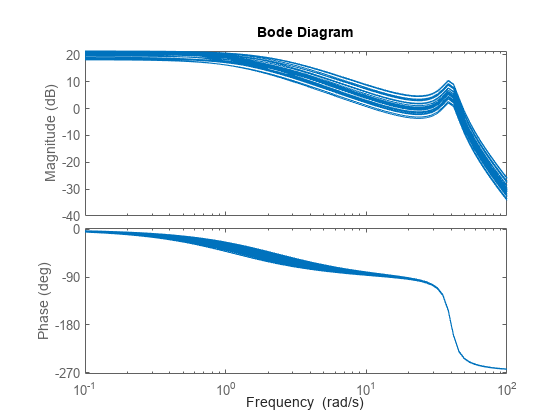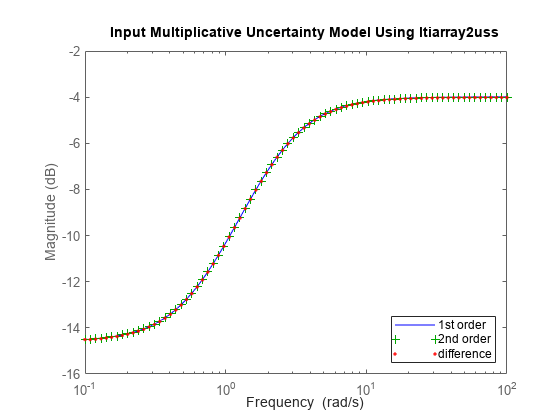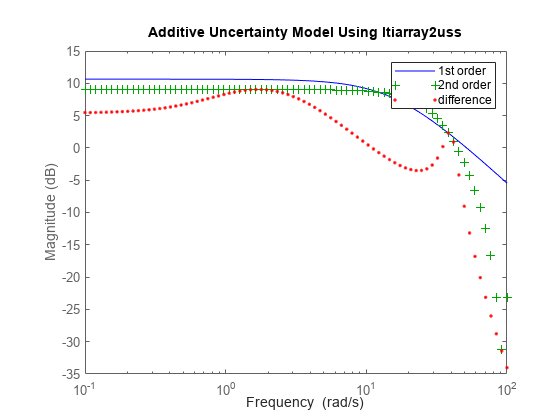ltiarray2uss
Compute uncertain system bounding given LTI ss array
Compatibility
Note
ltiarray2uss will be removed in a future release. Use ucover instead.
Synopsis
usys = ltiarray2uss(P,Parray,ord)
[usys,wt] = ltiarray2uss(P,Parray,ord)
[usys,wt,diffdata] = ltiarray2uss(P,Parray,ord)
[usys,wt,diffdata] = ltiarray2uss(P,Parray,ord,'InputMult')
[usys,wt,diffdata] = ltiarray2uss(P,Parray,ord,'OutputMult')
[usys,wt,diffdata] = ltiarray2uss(P,Parray,ord,'Additive')
Description
The command ltiarray2uss, calculates an uncertain system
usys with nominal value P, and whose range of behavior
includes the given array of systems, Parray.
usys = ltiarray2uss(P,Parray,ord), usys is formulated as an input
multiplicative uncertainty model,
usys = P*(I + wt*ultidyn('IMult',[size(P,2) size(P,2)])), where
wt is a stable scalar system, whose magnitude overbounds the relative
difference, (P - Parray)/P. The state order of the weighting function used
to bound the multiplicative difference between P and
Parray is ord. Both P and
Parray must be in the classes ss/tf/zpk/frd. If
P is an frd then usys will be a
ufrd object, otherwise usys will be a
uss object. The ultidyn atom is named based on the
variable name of Parray in the calling workspace.
[usys,wt] = ltiarray2uss(P,Parray,ord), returns the weight
wt used to bound the infinity norm of ((P -
Parray)/P).
[usys,wt] = ltiarray2uss(P,Parray,ord,'OutputMult'), uses
multiplicative uncertainty at the plant output (as opposed to input multiplicative
uncertainty). The formula for usys is
usys = (I + wt*ultidyn('Name',[size(P,1) size(P,1)])*P).
[usys,wt] = ltiarray2uss(P,Parray,ord,'Additive'), uses additive
uncertainty.
usys = P + wt*ultidyn('Name',[size(P,1) size(P,2)]).
wt is a frequency domain overbound of the infinity norm of
(Parray - P).
[usys,wt] = ltiarray2uss(P,Parray,ord,'InputMult'), uses multiplicative
uncertainty at the plant input (this is the default). The formula for usys
is usys = P*(I + wt*ultidyn('Name',[size(P,2) size(P,2)])).
[usys,wt,diffdata] = ltiarray2uss(P,Parray,ord,type) returns the norm
of the difference (absolute difference for additive, and relative difference for
multiplicative uncertainty) between the nominal model P and
Parray. wt satisfies diffdata(w_i) <
|wt(w_i)| at all frequency points.
Examples
Version History
Introduced in R2006a


